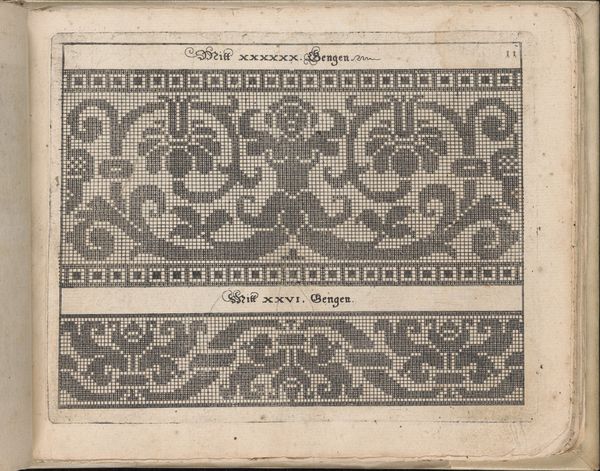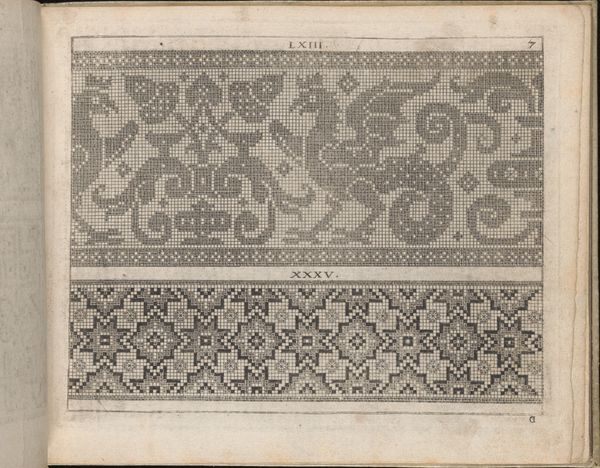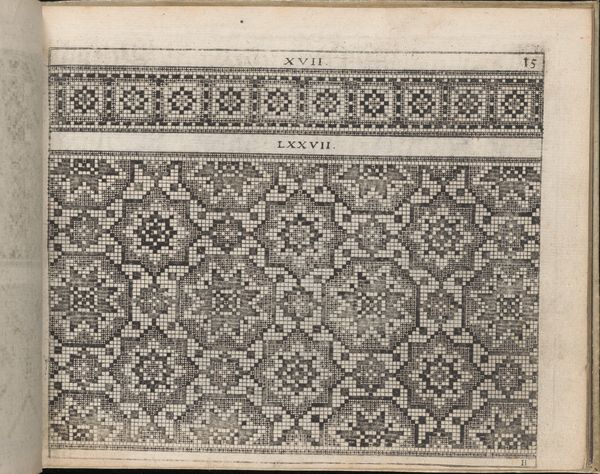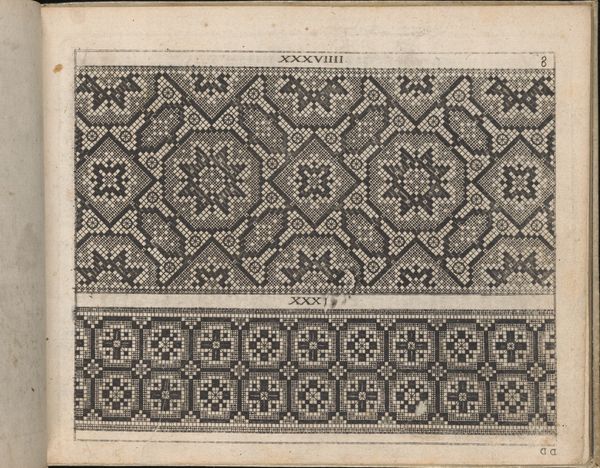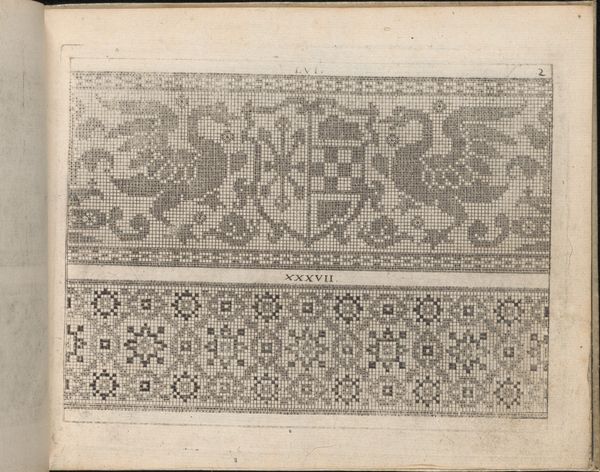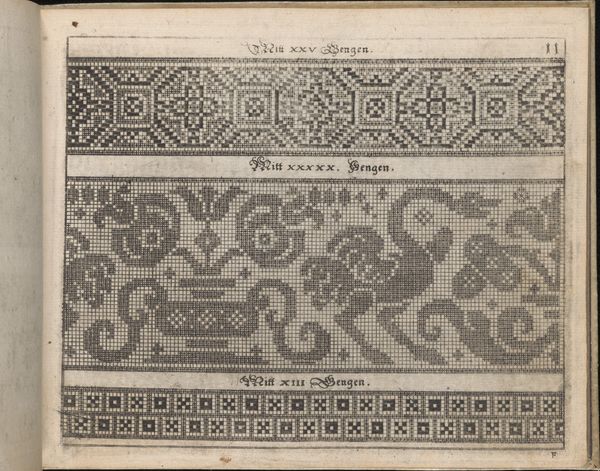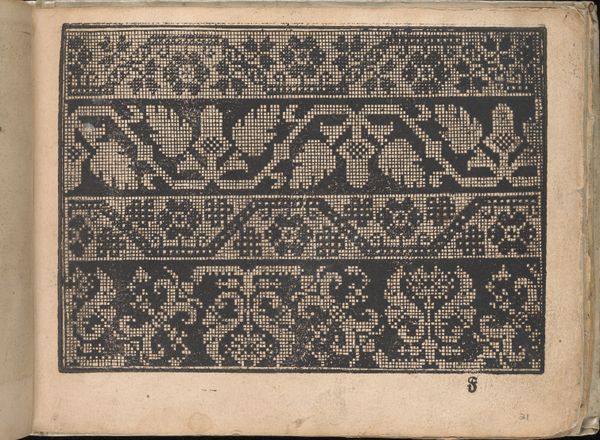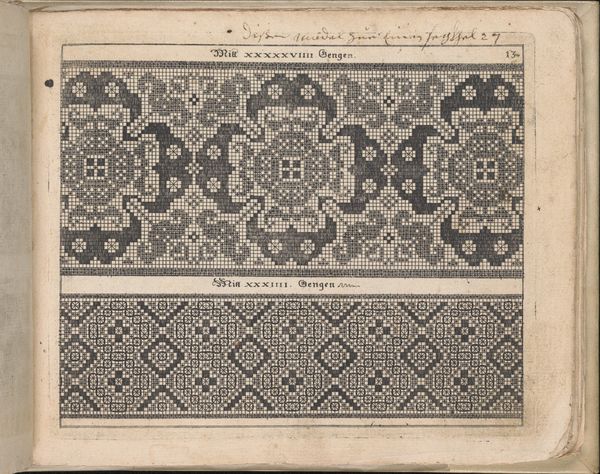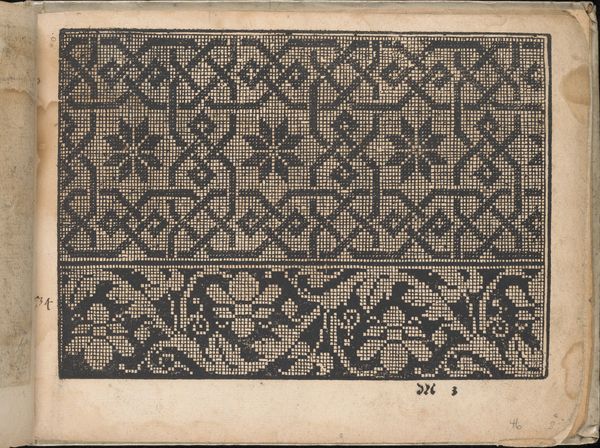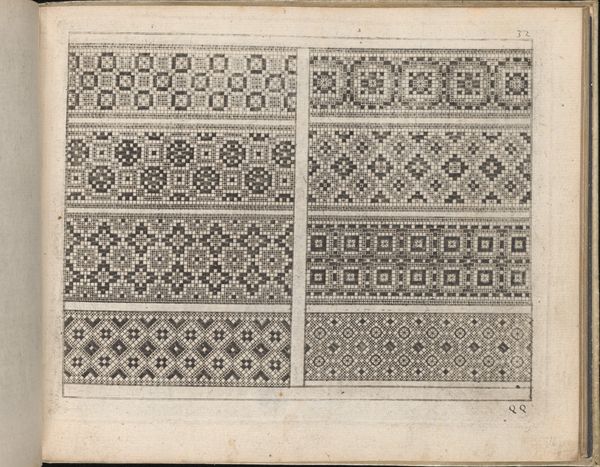
graphic-art, print, paper, ink, woodcut
#
graphic-art
#
toned paper
#
ink paper printed
# print
#
book
#
paper
#
form
#
ink
#
geometric
#
woodcut
#
line
Dimensions: Overall: 6 1/8 x 7 13/16 in. (15.5 x 19.8 cm)
Copyright: Public Domain
Editor: Here we have "Schön Neues Modelbuch (Page 17 recto)" created in 1597 by Johann Sibmacher, a print made with ink and woodcut on paper. I'm immediately struck by the intricate geometric and floral patterns. What do you see in this piece, beyond the obvious designs? Curator: I see a powerful testament to the agency of women in the Renaissance. These pattern books, though seemingly decorative, were vital tools. They were a primary resource that shaped domestic economies, empowering women through needlework, lacemaking, and other textile arts, but these patterns reinforced, by way of symbols, patriarchal values such as fertility and family hierarchy. How do you think these designs might have been used, and what role did gender play in their consumption and production? Editor: So, not just pretty patterns, but almost a form of silent language dictating women's roles and expectations at the time. Is that accurate? Curator: Precisely. Think about the context: these books were not only instruction manuals but also tools to impose roles and behaviours through repeated symbolism. Each carefully rendered motif became a statement, reinforcing societal norms regarding female labor, artistry, and domestic responsibility. They provided inspiration, but with a limited visual language that reinforced tradition and the feminine ideal of that period. Do you notice anything about the way the patterns are arranged that suggests a social hierarchy? Editor: Well, the geometric patterns seem more rigid and controlled, while the floral designs feel a bit more free-flowing. Could that reflect different levels of creative expression or maybe even social classes within the women who used them? Curator: That's an interesting interpretation! Consider, also, how the mass production of these patterns, thanks to printmaking, democratized access but also homogenized visual culture, reinforcing dominant ideologies on a wider scale. The book becomes not just art but a powerful tool in a complex game of social reproduction. Editor: It’s incredible to think of this book as a political artifact disguised as a simple pattern book. I'll never look at patterns the same way again. Curator: Indeed. Art provides such a potent tool, to understand a complex historical period through its visual and material culture, while gaining appreciation for the individuals impacted by historical forces.
Comments
No comments
Be the first to comment and join the conversation on the ultimate creative platform.


